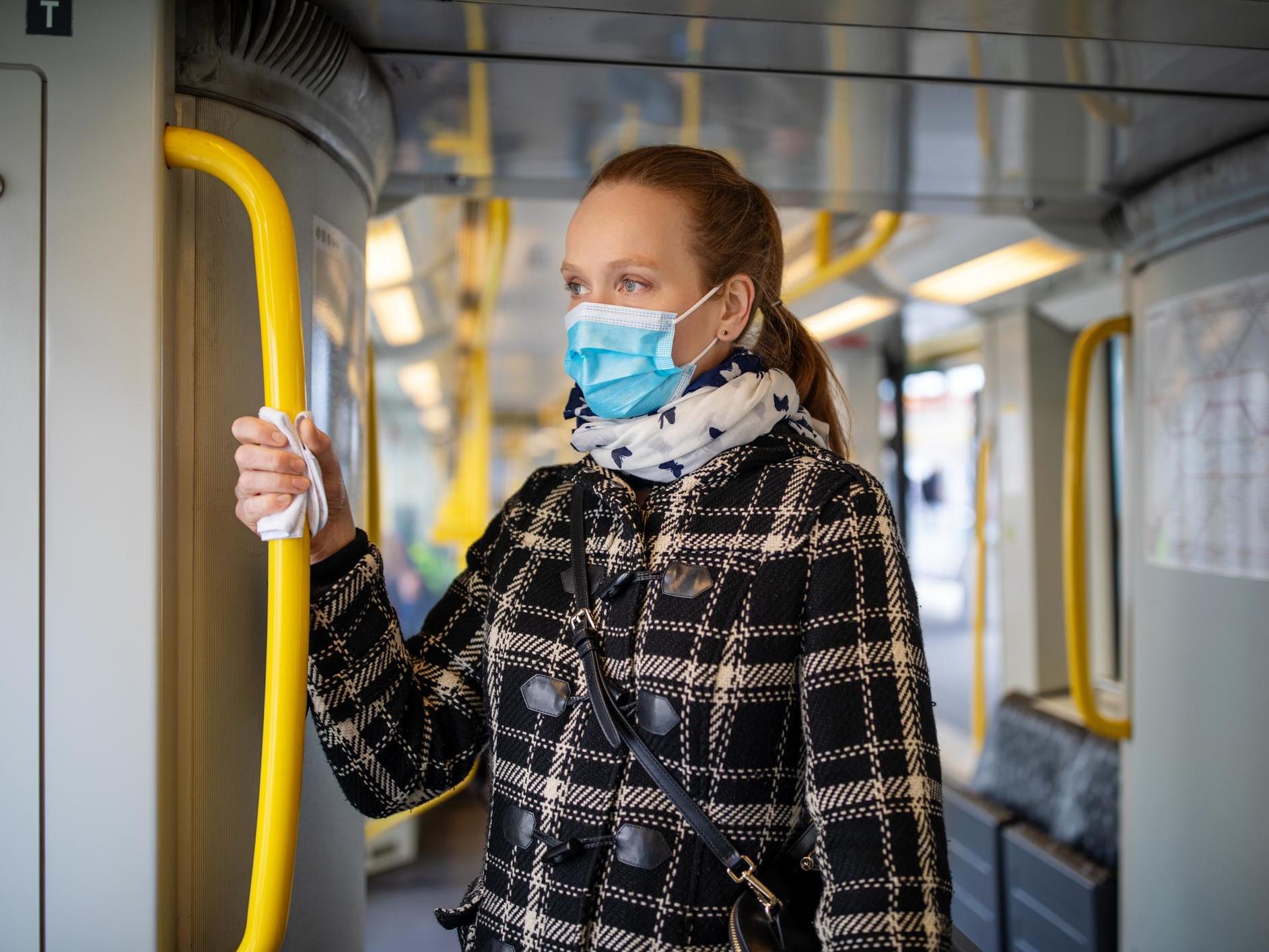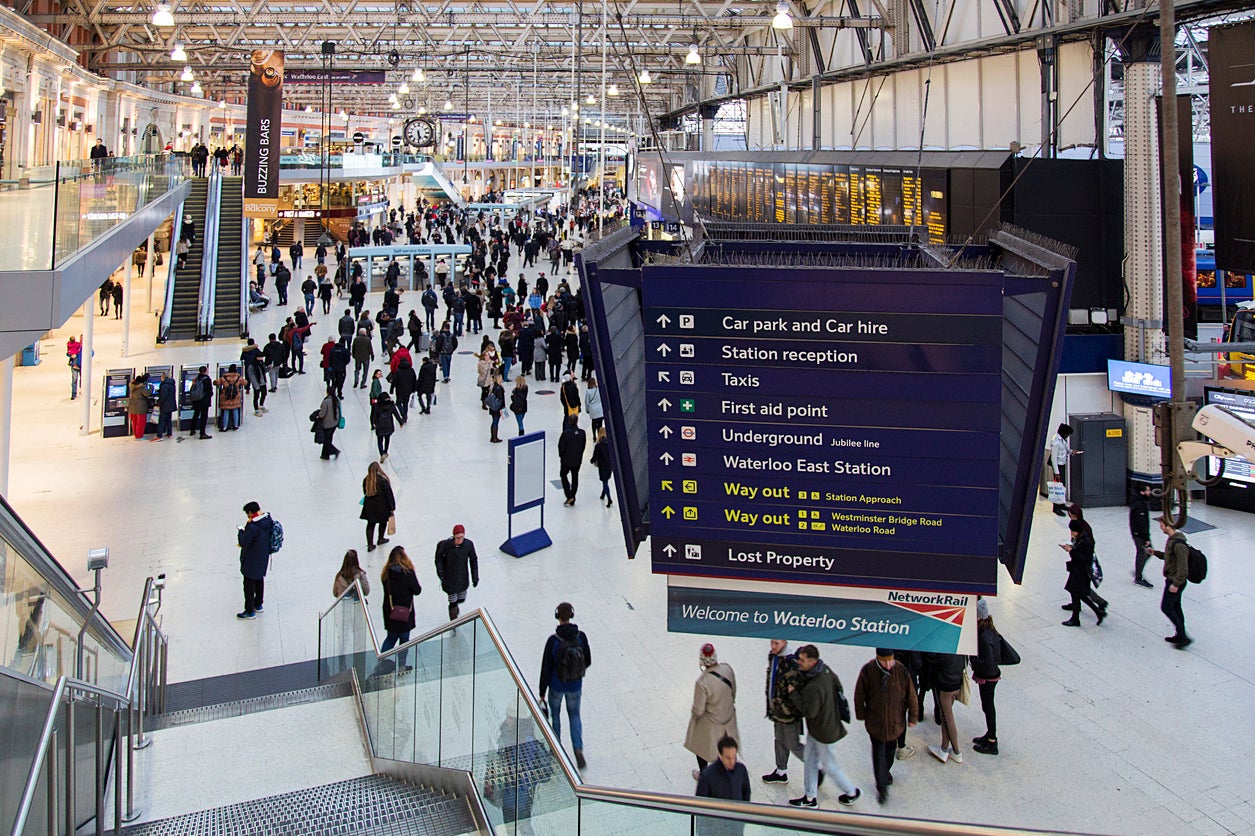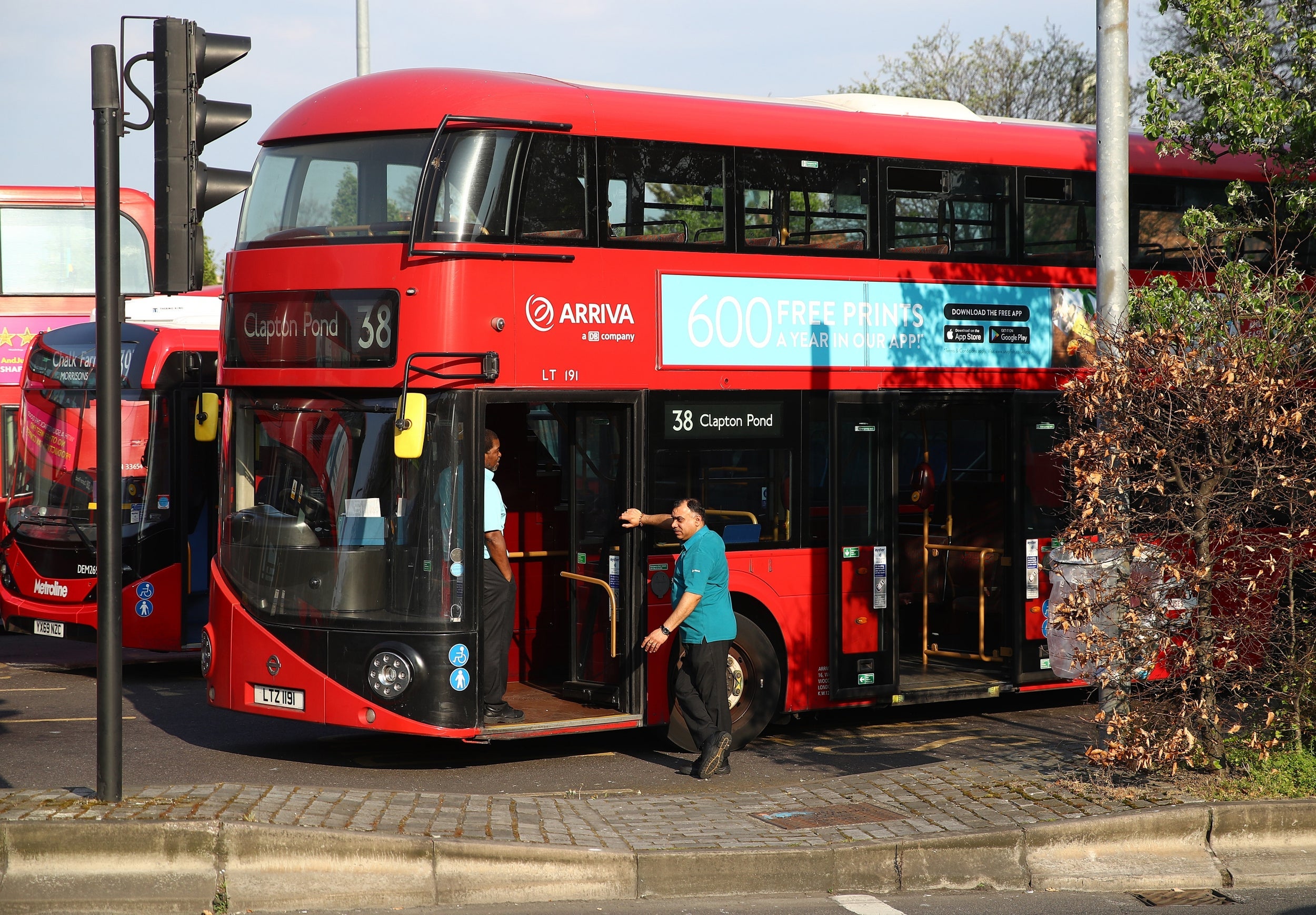Transport rules: Do I need to wear a face mask and are buses and trains safe?
Here's everything you need to know about travelling amid the coronavirus pandemic

Your support helps us to tell the story
From reproductive rights to climate change to Big Tech, The Independent is on the ground when the story is developing. Whether it's investigating the financials of Elon Musk's pro-Trump PAC or producing our latest documentary, 'The A Word', which shines a light on the American women fighting for reproductive rights, we know how important it is to parse out the facts from the messaging.
At such a critical moment in US history, we need reporters on the ground. Your donation allows us to keep sending journalists to speak to both sides of the story.
The Independent is trusted by Americans across the entire political spectrum. And unlike many other quality news outlets, we choose not to lock Americans out of our reporting and analysis with paywalls. We believe quality journalism should be available to everyone, paid for by those who can afford it.
Your support makes all the difference.This weekend, the government is introducing the biggest easing of lockdown rules since the coronavirus hit Britain.
On Saturday 4 July, a host of public spaces and businesses in England are beginning to reopen including pubs, restaurants, hairdressers and art galleries, while the two-week quarantine imposed on airline passengers travelling into the UK is set to lift two days later.
Similarly, while people are being urged to avoid using public transport where possible, and instead try to walk, cycle, or drive, buses and trains are available to use. The government has published new guidance for people on how to travel safely in the coming weeks, with the introduction of new rules such as wearing face coverings, social distancing and contactless payment.
Here is everything you need to know about travelling during the coronavirus crisis.
Flying
What are the government rules?
Passenger aviation has continued to, from and within the UK during coronavirus, but numbers have been low since 17 March, when the Foreign Office warned against all but essential travel. Numbers declined further on 8 June, when the two-week quarantine was deployed. But this “double lock” is likely to be lifted on 6 July, and big airlines have already resumed operations.
The law around flying is sketchy: passengers are required to wear a face covering at airports in Scotland, and “on board an airline service in England and Scotland”. In practice, however, all airports and airlines insist that face coverings are worn unless the passenger is young (precise ages vary) or unable to wear one because of a medical condition.
Airports are generally restricted to passengers and staff, though travellers who need assistance may be seen off or met. Social-distancing procedures operate at check in, through security, in restaurants, bars and shops, and at departure gates. The government is urging passengers to check in as much baggage as possible, in order to reduce the amount of congestion in the cabin.
Boarding is generally from the back of the aircraft to the front. Once on board, passengers are told to remain seated as much as possible; some airlines stipulate that permission must be sought from cabin crew to use the toilet. Many carriers are offering very limited in-flight service. The government says “use contactless payment where possible”.
On arrival, passengers are told to remain seated until those in front have retrieved their belongings and started to leave the aircraft.
How safe is flying?
Dr David Powell, medical advisor for the International Air Transport Association (IATA), says aircraft design minimises the risks on board of droplet transmission: “There are high flow rates, with no stagnant air and very little fore-aft flow.”
The on-board air supply is sanitised through HEPA filters, similar to those used in operating theatres. Airlines have overhauled their cleaning protocols, with checks between flights and thorough disinfection of services at the end of each day’s service.
What can you do to keep yourself safe?
- Book direct flights rather than connections. The risk of infection increases in line with the number of different interactions, which in turn rises with each airport you pass through and each aircraft you board. If a nonstop flight is available, paying extra for it will reduce the danger.
- Don’t hang around in the airport. We’ve all become accustomed to spending lots of time at the airport but with passenger numbers far lower than usual, processing is actually quicker than usual. The less time you spend in the departure airport, the lower the probability of infection.
- Take less luggage. The Department for Transport (DfT) urges travellers to check in everything they can, but since this involves two more procedures – at the departure and arrival airports – it is better to take only hand luggage, and minimise the amount.
- Bring your own snacks. The number of locations in airports providing food for flights is increasing, but if you bring your own supplies you will reduce interactions.
Rail travel
What are the government rules?
“Can you travel another way?” asks a billboard at what is normally Europe’s busiest rail station, London Waterloo, with travellers urged to walk, cycle or drive instead. The Department for Transport (DfT) and train operators are doing all they can to dissuade all but essential journeys.
Network Rail, part of the DfT, says: “Only take the train if there’s no other way to travel. Passenger carrying capacity, with social distancing in place, remains very constrained with the ability to carry only around 10-13 per cent of normal levels.“

Anyone who does travel must wear a face covering for the full duration of your journey on public transport in England and Scotland This includes time spent in the station. Some exemptions are in place for age and health reasons. If you do not wear a face covering you will be breaking the law and could be fined £100, or £50 if you pay the fine within 14 days.
How safe is rail travel?
Travel health expert Dr Jane Wilson-Howarth said: “The air in crowded trains tends to be stagnant and shared with lots of people so that these would be perfect environments for acquiring lots of virus.”
Dr Richard Dawood of the Fleet Street travel clinic, says the risk to some extent depends on the age of the rolling stock: “The newer the train, the more likely it is to have decent air-conditioning.” But says that what would be preferable is older models where windows still open and allow fresh air because the air is moving through the cabin more quickly rather than re-circulated.
Dr Simon Clarke, professor in microbiology at University of Reading, also raises the point of train ventilation and says because you’re likely to be on one for more than 15 minutes - the risk increases. “Table seats are another riskier touch point and you’re likely to be face-to-face with someone else - I’d be interested to know if train companies are booking those seats at the moment.”
What can you do to keep yourself safe?
- Avoid peak time. The morning peak is regarded as the most susceptible to crowding, with passengers urged to avoid non-urgent journeys between 5.45am and 9am on some busy lines, particularly into London. There is often a second peak immediately after 9.30am when off-peak fares take effect.
- Use window seats (and avoid table seats). This reduces the proximity of interactions with other passengers. On some trains there are still windows you can open a little – do this, even if it annoys your fellow travellers
- Book in advance for long-distance trains. The UK railway has long had a policy of allowing passengers with flexible tickets to board any train they wish, so long as they don’t mind standing. During the coronavirus crisis, that option has been suspended.
- Go express. The fewer stops your train makes, the fewer interactions there will be.
Ferry
What are the government rules?
The UK is heavily dependent on ferry transport but non-essential journeys have been discouraged during coronavirus.
All passengers must wear a face covering when travelling on ferry or hovercraft in England, and you can be fined if you do not. This includes when you are in the ferry terminal. It is possible, though, that in some outdoor areas, you may be able to take the mask off temporarily. Social distancing should be in place with people trying to maintain a two metre distance at all times.
How safe is ferry travel?
Dr Richard Dawood says: “Being outdoors is great. Being on an outer deck of a cross-Channel ferry should be perfectly bearable.”
Simon Palmer of Stena Line says that the company has capped the numbers of passengers on each crossing, and adds: “Fresh sea air is now being circulated into the air filtration systems on all ferries. New fog machines are being used to sanitise communal areas and cabins on the ferries, alongside the continuous cleaning routines being undertaken throughout the ships.”
What can you do to keep yourself safe?
- Go off-peak. On short cross-Channel ferries, this will be early or late services – typically leaving Dover before 9am or after 6pm. This will reduce the likely number of passengers.
- Book a cabin. On some longer Irish Sea, Channel and North Sea ferries it is possible to pay extra for a cabin, which will give much more protection against possible infection. But only if it is for the sole use of you and your household. (Ferry firms are generally insisting on this, anyway.)
- Take a bicycle. If you are not a car driver, and would normally be a foot passenger, actually taking a bike means you can access and leave the ferry via the car deck, reducing encounters with other people.
- Go undersea. If you are a vehicle driver and prefer minimal interactions, then Eurotunnel’s car carrying operation from Folkestone to Calais is probably the way to go.
Underground
What are the government rules?
Passengers on the London Underground are asked to explore all other options before getting on the tube and continue to work from home where possible. This is largely because – unlike many other environments – there is limited capacity for social distancing on the tube unless numbers are greatly reduced.
Face coverings are compulsory on the tube in England, as well as the subway in Scotland. Busy stations should have separate entrance and exit routes – you should also follow directional arrows inside the station to keep apart.

How safe is underground travel?
Adam Kucharski, an associate professor at the London School of Hygiene and Tropical Medicine, says that the nature of interactions on tube trains, and the limited time that many passengers spend on it, mean that it does not present as significant a threat as you might think.
But Dr Clarke says he does worry about when tube trains become more densely packed again: “If [people] think their face mask is going to protect them then they’re kidding themselves - they’ll have a tiny mitigation. And there is no evidence that facing the doors rather than inwards makes a difference. In reality if you’re stood next to someone with the virus you’re at quite considerable risk.”
What can you do to keep yourself safe?
Bigger is better. The “sub-surface lines” of the London Underground, ie the District, Circle and Metropolitan Lines, have bigger carriages with more space for social distancing than the narrower-profile Tube lines. They also have more stations with access to fresh air. But Dr Clarke says the fact they aren’t compartmentalised does mean the virus is free to spread throughout, unlike older models.
Buses and coaches
What are the government rules?
As with other forms of transport, the government would prefer passengers not to use buses if they can possibly avoid it. If you must use them, the Department for Transport (DfT) rules out any kind of partying: “Travel side by side or behind other people, rather than facing them, where seating arrangements allow.” You are also recommended to avoid food and drink where possible, and like in pubs, avoid loud talking, singing or shouting.
There is also a limit on the number of passengers on most bus services – typically 20 on a London double-decker. “Wait for the next service if you cannot safely keep your distance on board,” says the DfT. Transport Scotland says: ”The bus driver may have to ask you to wait for the next service, even when it does not appear necessary, due to reduced capacity and physical distancing measures.”

However, National Express, which resumed long-distance coach services on a skeleton network on 1 July, has no restrictions on who may use its services. But it does have other rules like requiring all passengers to have their temperature taken: anyone above 38C will be denied boarding and given a full refund.
Travellers are required to wear face coverings on all bus and coach services. Passengers are asked to fill vehicles from the back, and empty from the front.
How safe is bus travel?
Dr Clarke says: “Buses you don’t tend to be on for as long as train journeys, and obviously the time you’re on the transport does make a difference to your likelihood of risk. But be wary of touch points like doors, card readers and arm rests - these things makes a difference.”
What can you do to keep yourself safe?
- Go nonstop. Even on its reduced network, National Express has a range of inter-city departures. Faster services mean fewer stops along the way, and less time in which you may become infected.
- Buy in advance, or use contactless payments. Most transport systems now have fully integrated contactless systems, which mean you don’t ever need to handle cash or see a ticker operator. Buy in advance if you can or use your contactless card on the day.
Taxis, minicabs and Ubers
What are the government rules?
Notwithstanding the general preference for avoiding travel altogether, the UK government seems to regard taxi travel as the lesser of several evils – especially for single travellers, and for journeys home from airports.
As on other public transport passengers are encouraged to wear face coverings although this is not mandatory. The Department for Transport does say drivers may be entitled to refuse anyone who does not cooperate in wearing one.
How safe are Taxis, minicabs and Ubers?
Many ride hire companies like Uber, have created strict policies on when drivers can working, telling them: “If you have a mild illness, respiratory symptoms, or have a fever (38C or above), stay home and keep away from others.” It also requires drivers to send a selfie at the start of their shift proving they are wearing a mask.
Dr Clarke says you can expect private hire cars to be safer than a tube or train, or other transport where you are travelling with people but don’t be lulled into a false sense of security - the cleanliness of the back seat still replies on drivers taking those precautions.
What can you do to keep yourself safe?
- Open the windows. The ability to drive along with all the windows open provides a level of protection – though of course cold air or rain may mean that travellers (and drivers) do not avail of the opportunity.
- Follow the advice of the driver on where to sit. For example, they might recommend the back left seat - furthest from the driver. Use contactless payment if possible, or find out if you can pay online in advance.
- Be aware of the surfaces you touch. Just because you didn’t come into contact with the driver or another passenger, doesn’t mean germs from the previous passenger aren’t lingering. When finishing your journey wash your hands for at least 20 seconds or sanitise your hands as soon as possible.
Read more about what the easing of lockdown restrictions means here.
Join our commenting forum
Join thought-provoking conversations, follow other Independent readers and see their replies
Comments